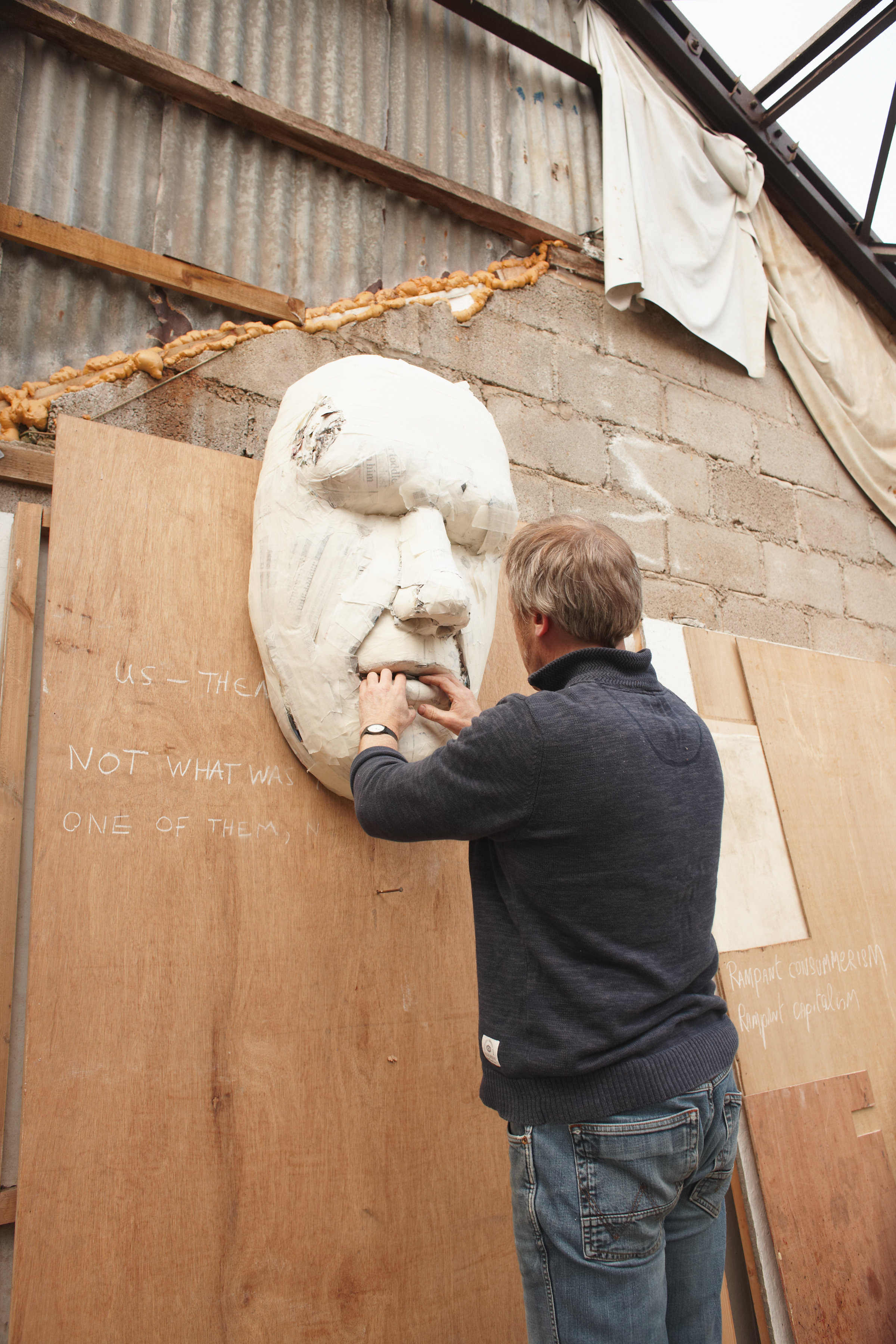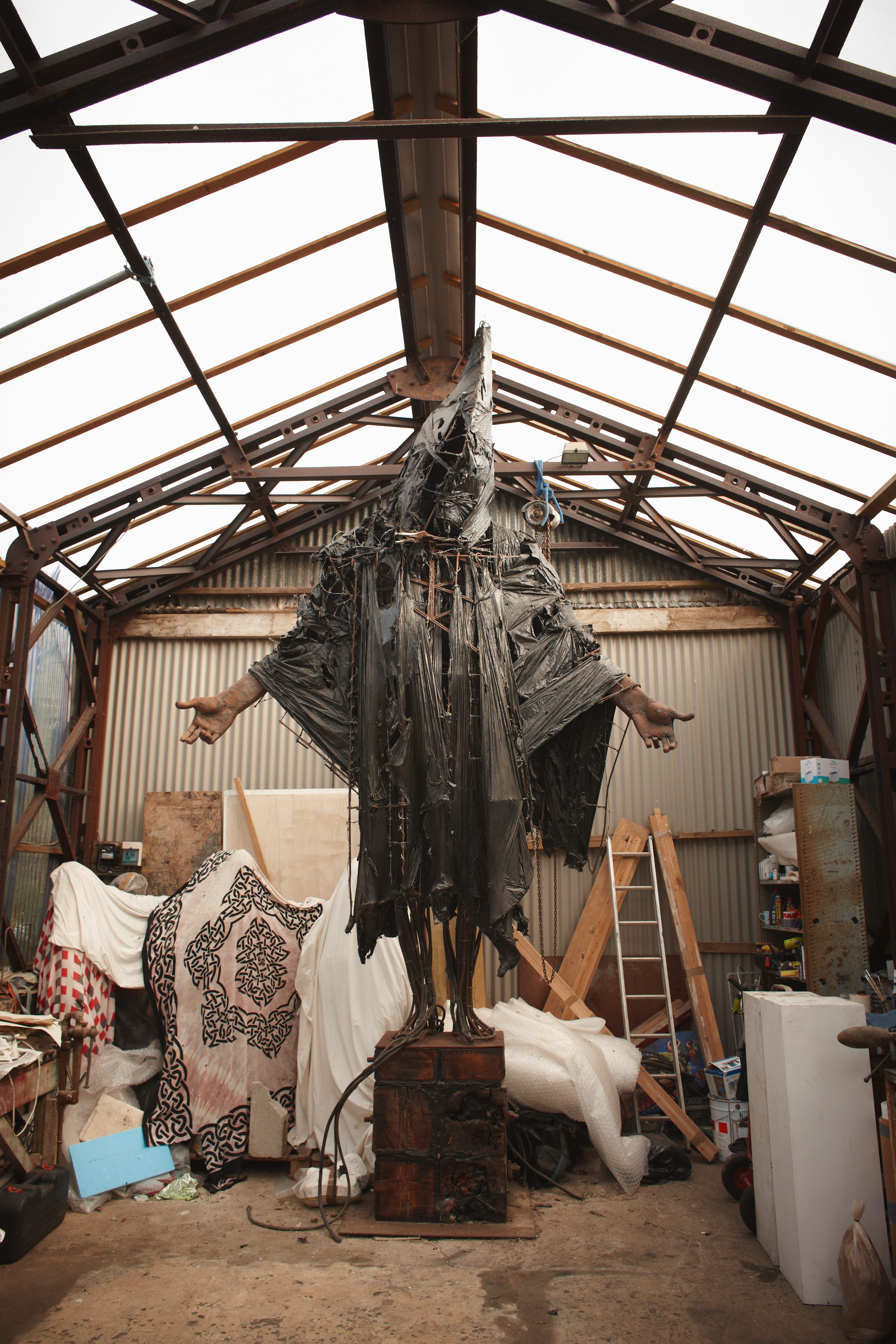Light and Dark Down on The Farm
At a glance, Tim Shaw’s solid stone cottage has the gravity of his vast works in bronze, and so does Shaw himself. But while the Royal Academician is best known for his unflinching interpretations of war, politics and the human heart of darkness – ‘Casting a Dark Democracy’, ‘Man on Fire’, ‘Tank on Fire’ – he is not the grave and somber man you might expect. His rose garden is beloved and well-tended. And a whimsical Ken doll has incubated in the hedge. Inside his remote Cornish cottage, a papier-mâché puppy sleeps under a chair, and up the brilliant yellow kitchen wall, a small red school bus careens. A Jolly Green Giant bean tin sits on the shelf, reminding that Shaw employed just such a can as a plinth while sculpting ‘The Pregnant Fairy’.
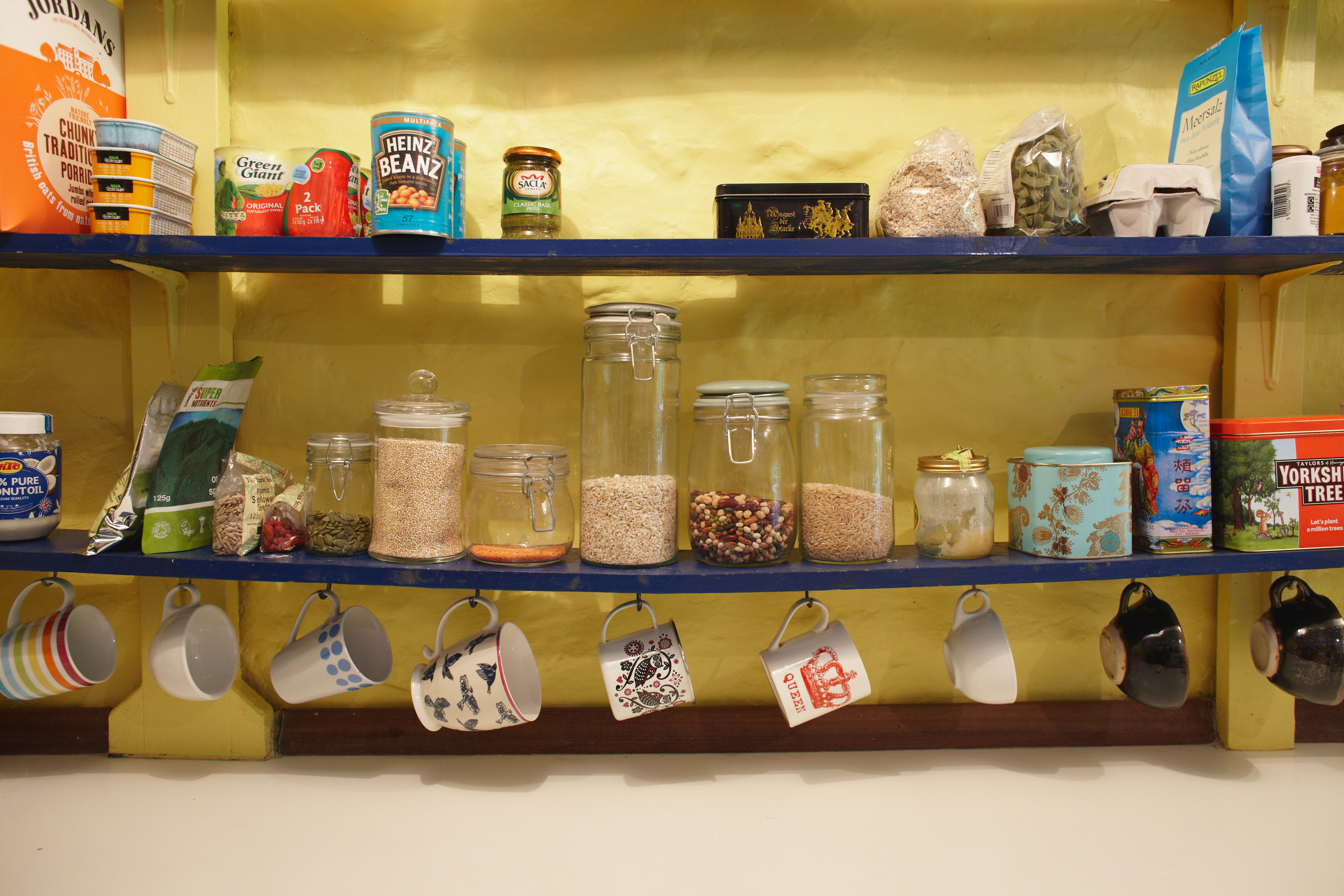
Down the lane, ‘The Middle World’ – Shaw’s earliest but ongoing opus – fills most of a dark and musty cow barn where it was originally conceived. ‘The Middle World’ is at once baroque, looming, hybridal, disorienting, comical and threatening. Beyond it are stacked the plaster moulds of giant, disassembled heads and feet, and – ghostly bound up in bubble wrap – the crazed figures of ‘Ketamine (The Bisto Kids Gone Wrong)’.
Shaw is the longest-standing artist to make his studio in the iconic farmyard, watched over by an imposing but ramshackle manor house where owner Michael Pokenhorn lives. For almost thirty years, Michael has supported young artists and artisans by offering them his outbuildings as simple, inexpensive studios.
The farmyard retains the values and vibe of Cornwall before its tourist boom, when an artist could rent a boat builder’s shack with a view of the sea, while surviving on the dole. Sitting on a hill above Falmouth, ‘The Farm’ might be mistaken for an island of lost boys.
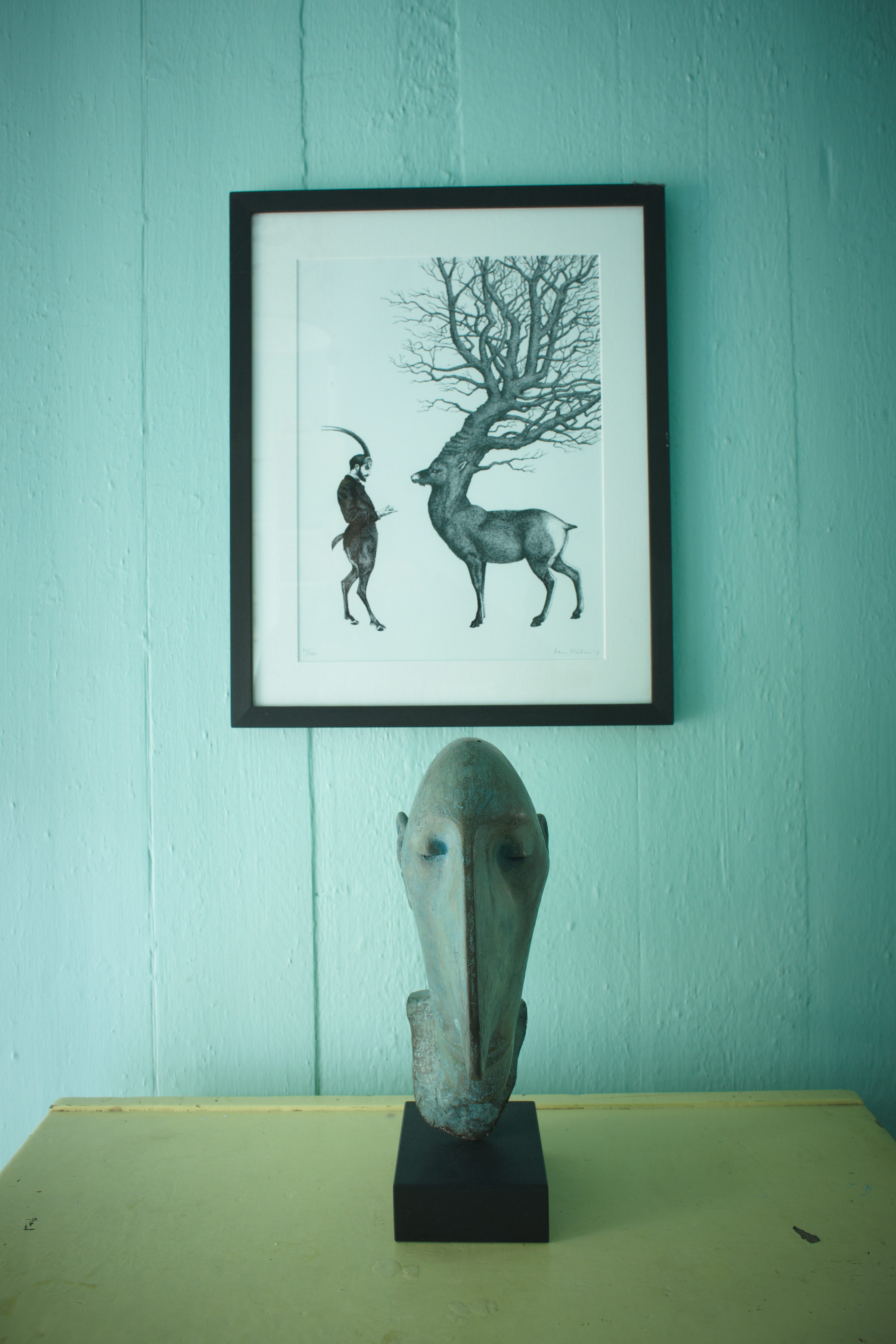
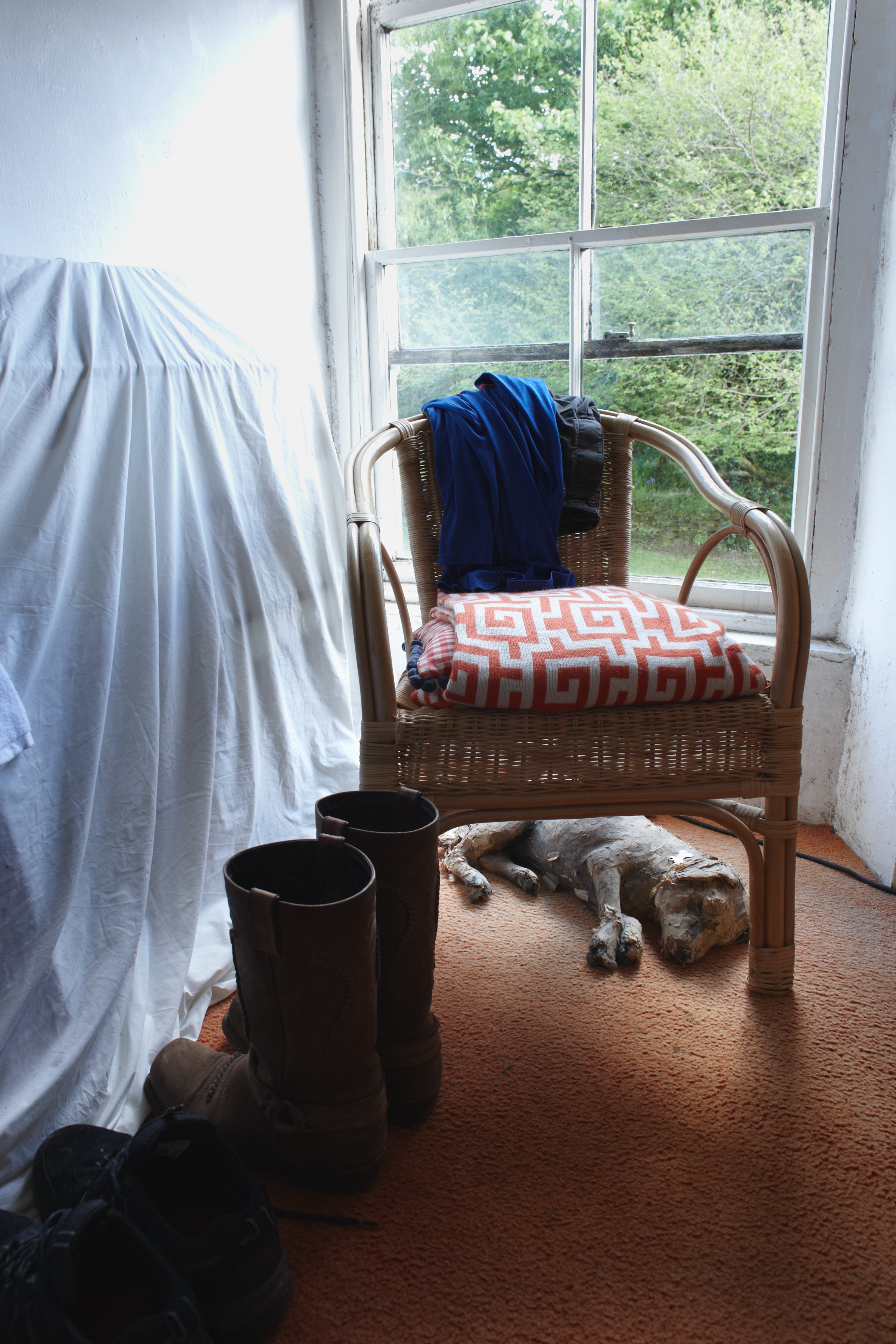
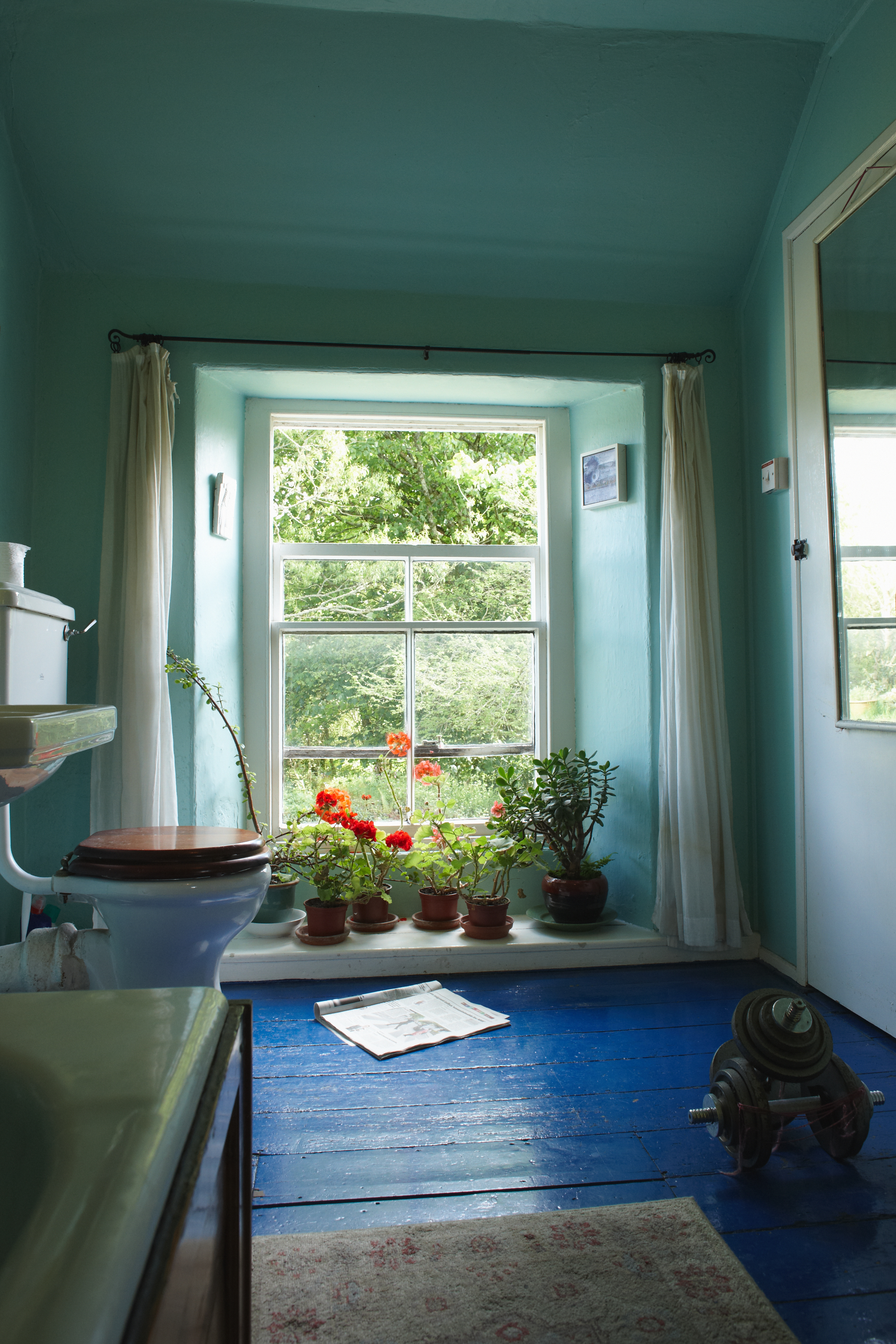
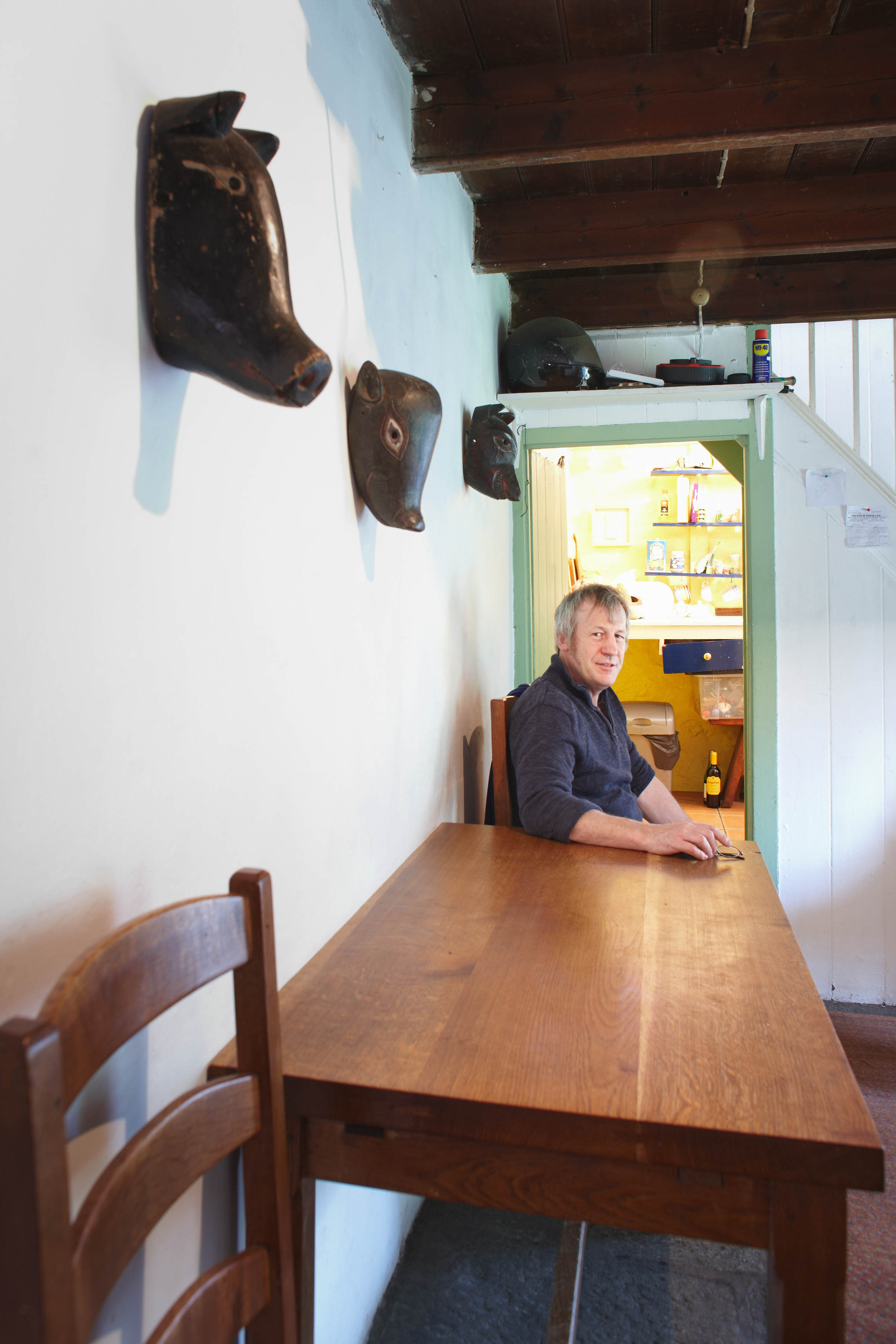
Occupying one of The Farm’s studio-sheds is artist Carlos Zapata, who, as a lone young man, with no money in his pocket and no friends or relatives to greet him, immigrated to England from civil war-torn Columbia. Today, he’s a successful automata-artist and sculptor and his work is held by museums across the world. Zapata is a handsome, gentle man who speaks with a graceful Columbian accent and whose work is influenced by both the exuberant folk traditions and the violence of his youth. His automata – mechanical hand-cranked sculpture – can be playful and delightful, like in ‘Carnival’, a dancing menagerie of animal-headed creatures. But, recently, Zapata has turned his attention to sculpting darker memories in the guise of toys. Playing on the tradition of toy soldiers, his series ‘Child Soldiers’ remembers the kidnapped children forced into service as guerrilla insurgents. The effect of a toy is visceral, with disquieting implications. A little wooden boy holds his hands in the air. A posy of child soldiers point their machine guns at him. You turn the crank underneath. You hear the rat-a-tat-tat. It’s you who killed the boy.
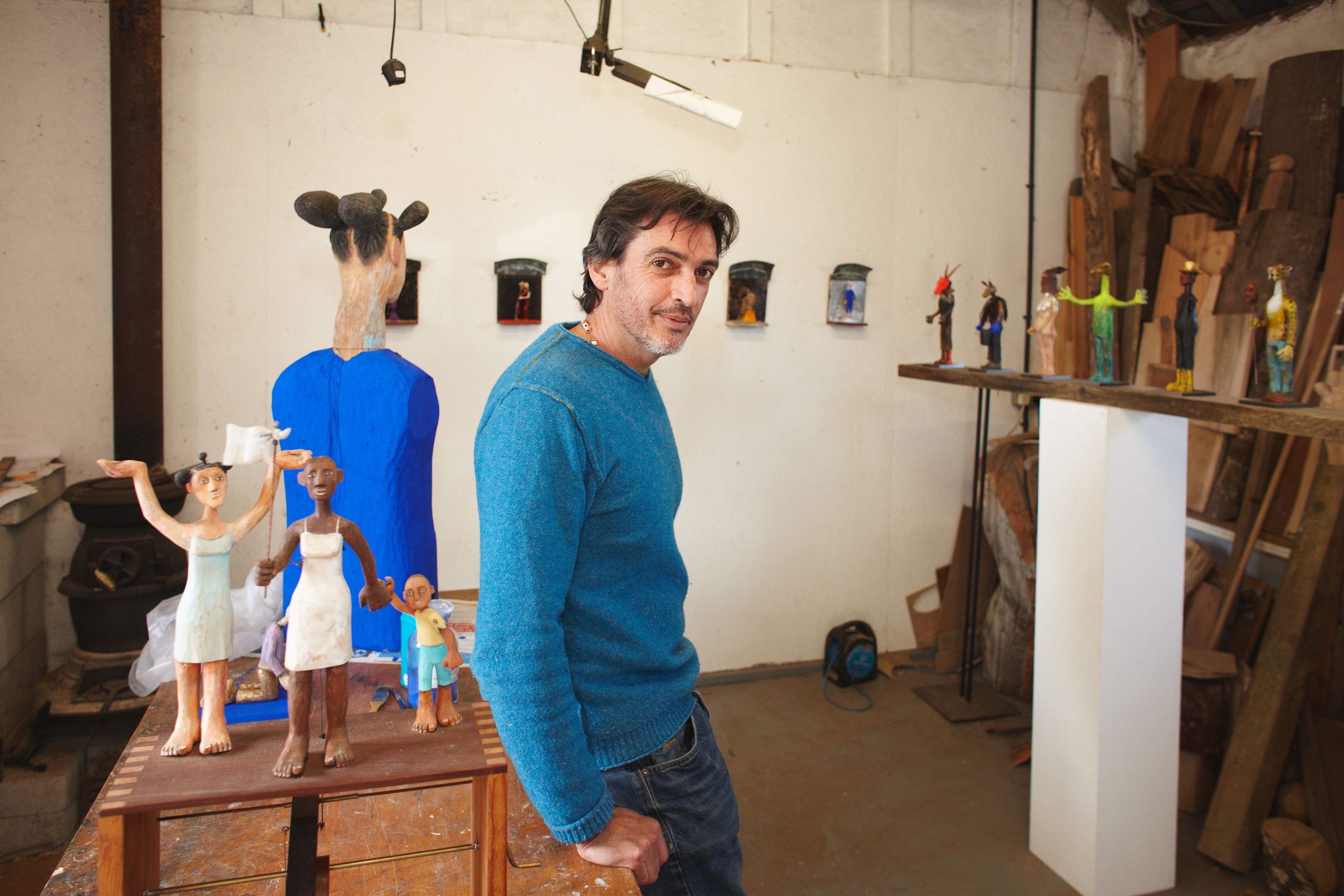
At the other end of the studio, Shaw is constructing a green man of the woods. It’s a light-hearted figure constructed of bent cardboard, but the distance between it and ‘Dark Democracy’ is not as far as you might think. There is no contradiction in Shaw’s work and it makes little difference whether he is shaping a tiny wax maquette or working on a giant A.I. robot: humour and horror, light and dark edge against each other, taking form with equal mastery, be it in bronze or barbed wire or stitched together from old clothes. ‘Casting a Dark Democracy’, ‘Ketamine’, ‘Middle World’, ‘Green Man’, ‘Pregnant Fairy’, and most recently, ‘Breakdown Clown’ comprise an ever-extending pantheon, in which Shaw has captured the primal energies conducting life and death.
©Dennison Smith
